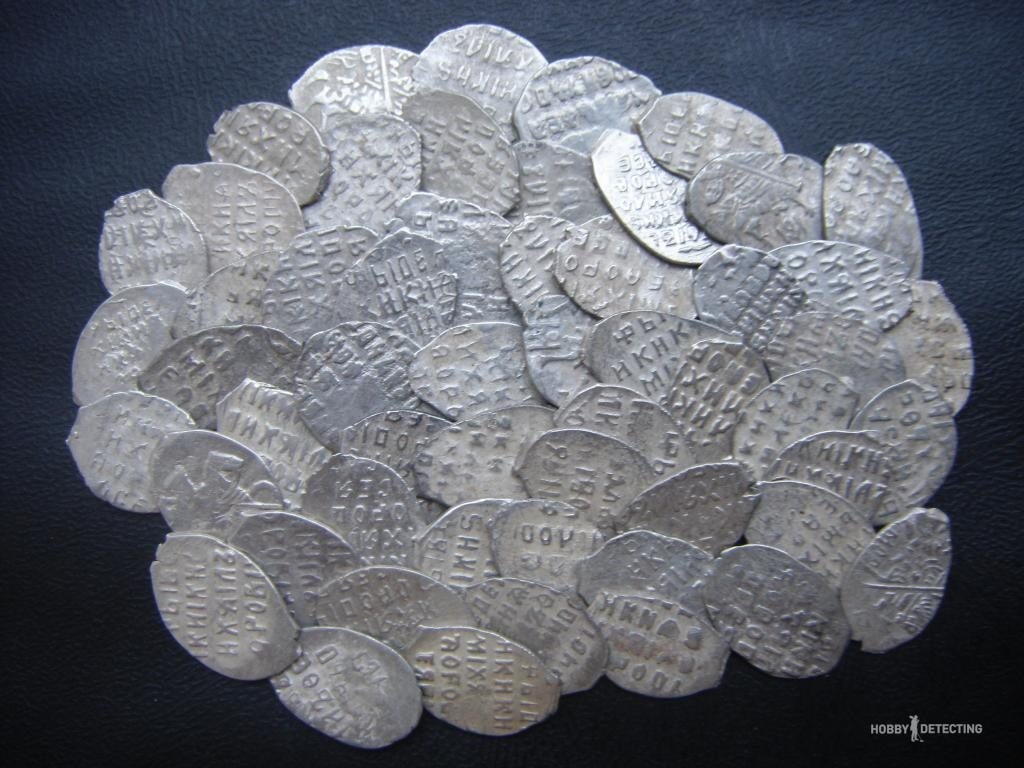Scales from the time of Tsar Mikhail Fedorovich (identification of finds, photos, history+)
Today we will talk about the silver scales of the first Russian Tsar from the Romanov dynasty – Mikhail Fedorovich.

During his reign (1613-1645), coins in Russia began to be minted in incredibly large volumes, so they come across relatively often and are usually inexpensive. However, it is worth keeping in mind that these coins are very small and not every metal detector is able to see them in the thickness of the earth. For example, entry-level devices may not notice them at all, even on the surface, so the scales are usually encountered by owners of more serious and expensive devices, for example, such as Nokta Fors Relic.

So, with the coming to power of the Romanov dynasty in 1613, the mints in Novgorod, Pskov and Yaroslavl gradually began to close. By 1626-1627 all coin production of the Russian kingdom was concentrated in Moscow, at the money court in the Kremlin. Silver coins, money and pennies were minted here, which, due to their characteristic shape and size, can be combined under one name – scales.

It is the flakes minted in this yard that treasure hunters most often find, although Yaroslavl imitations are sometimes found. There are a lot of coin reference books, where everything is described in detail, but to understand what coin denomination you were lucky enough to pick up, you don’t have to consult them. Just look carefully at the obverse. On the penny there is a horseman with a spear, on the money there is a horseman with a saber, and on the coin there is a dove. The dating situation is a little more complicated. On earlier examples, the name of the Tsar on the reverse is usually written as MIKHAILO, but a rarer form is also found – MIKHAIL. In later versions, the name of the king on the reverse is MIKHYAIL or MIKHYAILO. 
In addition to silver ones, gold scales were also minted. They were not included in monetary circulation, but were issued as awards for military valor. This tradition originated in Rus' back in the 15th century. Gold scales were attached to clothing and were harbingers of medals, so gold scales are usually found with a hole. Ordinary warriors were awarded gilded scales.

Pskov and Novgorod kopecks of Mikhail Fedorovich

Moscow kopecks of Mikhail Fedorovich
Click on the picture to enlarge it.
Did you manage to find the scales of Mikhail Fedorovich? Share your finds!
